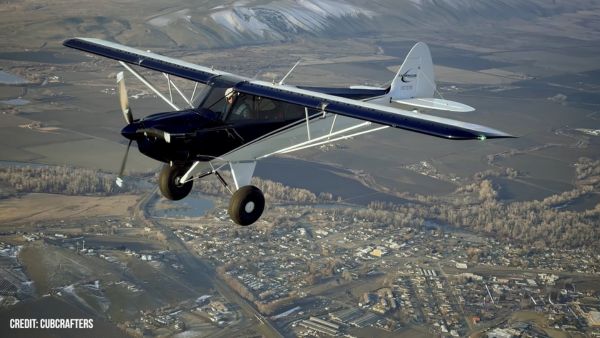Aero-Tips!
A good pilot is always learning -- how many times have you heard
this old standard throughout your flying career? There is no truer
statement in all of flying (well, with the possible exception of
"there are no old, bold pilots.") It's part of what makes aviation
so exciting for all of us... just when you think you've seen it
all, along comes a scenario you've never imagined.

Aero-News has called upon the expertise of Thomas P. Turner,
master CFI and all-around-good-guy, to bring our readers -- and us
-- daily tips to improve our skills as aviators, and as
representatives of the flying community. Some of them, you may have
heard before... but for each of us, there will also be something we
might never have considered before, or something that didn't
"stick" the way it should have the first time we memorized it for
the practical test.
It is our unabashed goal that "Aero-Tips" will help our readers
become better, safer pilots -- as well as introducing our
ground-bound readers to the concepts and principles that keep those
strange aluminum-and-composite contraptions in the air... and allow
them to soar magnificently through it.
Look for our daily Aero-Tips segments, coming each day to you
through the Aero-News Network. Suggestions for future Aero-Tips are
always welcome, as are additions or discussion of each day's tips.
Remember... when it comes to being better pilots, we're all in this
together.
Aero-Tips 05.08.06
Operation Lights On is a voluntary
program encouraging pilots to turn on their landing lights during
takeoff; when operating below 10,000 feet (day or night),
especially when within 10 nautical miles of an airport; and in
conditions of reduced visibility. The idea is to make it easier for
pilots to see other aircraft, enhancing the ability to see and
avoid each other.
Operation Lights On also encourages use of landing lights in
areas when you might expect flocks of birds, such as coastal areas
or near landfills. It’s thought that bird strikes will be
fewer if the birds see airplanes more readily.
Avoiding burnout
Aircraft manufacturer's recommendations for operation of landing
lights and electrical systems should be observed. Landing lights
take a lot of power; in some airplanes, especially smaller or older
types, the electrical system is relatively weak and cannot keep up
with the load.
Landing light bulbs are notoriously expensive. Several schemes
have been promoted to extend bulb life, including:
- Shock absorption. Mounting a soft gasket or even
spring-mounting landing light bulbs, so hot filaments are not
jostled around as much.
- Realigning the bulb. Some think that bulbs mounted
traditionally, with the filament horizontal, exposes the filament
to wild stretching movements in turbulence and on landing. Turning
the bulb 90 degrees, so the filament is vertical, makes these
bounces flex the filament like a spring instead of stretching it
when its hot.
- Moving the landing light. It’s thought that mounting a
landing light on the engine cowling makes it more likely to burn
out early from vibration. That’s one reason why Cessnas,
since production resumed in the 1990s, have the landing light in
the less-than-optimal (for ground illumination) wing leading
edge.
Flashing the light. Flashing the landing light, such as with the
Pulselite™ system, permits
short periods of cooling between bursts of light, with an overall
lower bulb temperature. (Note: flashing also
makes the light far more visible from a distance).
Any of the above may or may not increase a particular light
bulb’s longevity. Remember that most modifications require
FAA approval.
Aero-tip of the day: Turn on landing lights on
in poor visibility, at low altitude and/or in the vicinity of
airports to improve your chances to see and be seen. Although
turning on aircraft lights does enhance the see-and-avoid concept,
don’t become complacent about keeping a sharp lookout for
other aircraft. Not all aircraft are equipped with lights and many
pilots may not have their lights turned on.
 SpaceX to Launch Inversion RAY Reentry Vehicle in Fall
SpaceX to Launch Inversion RAY Reentry Vehicle in Fall Aero-News: Quote of the Day (04.23.24)
Aero-News: Quote of the Day (04.23.24) Aero-News: Quote of the Day (04.20.24)
Aero-News: Quote of the Day (04.20.24) ANN's Daily Aero-Linx (04.20.24)
ANN's Daily Aero-Linx (04.20.24) Aero-News: Quote of the Day (04.21.24)
Aero-News: Quote of the Day (04.21.24)



